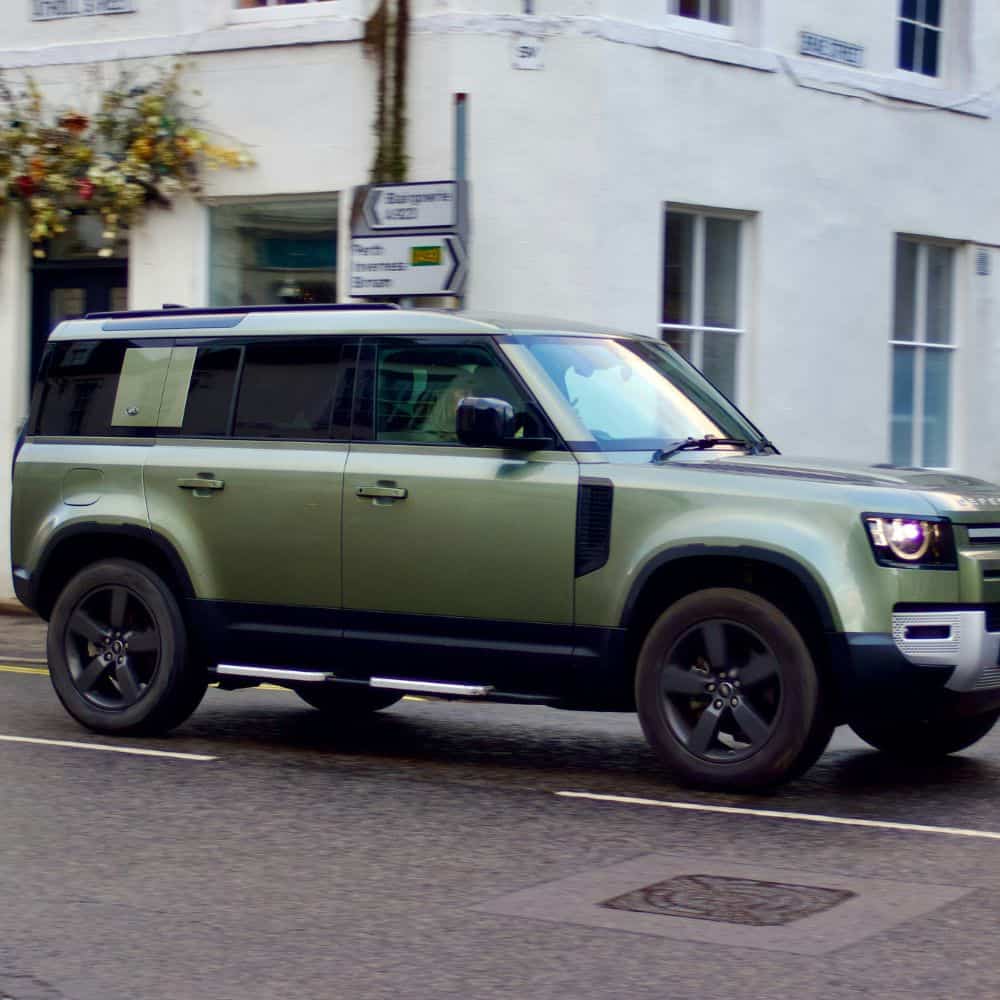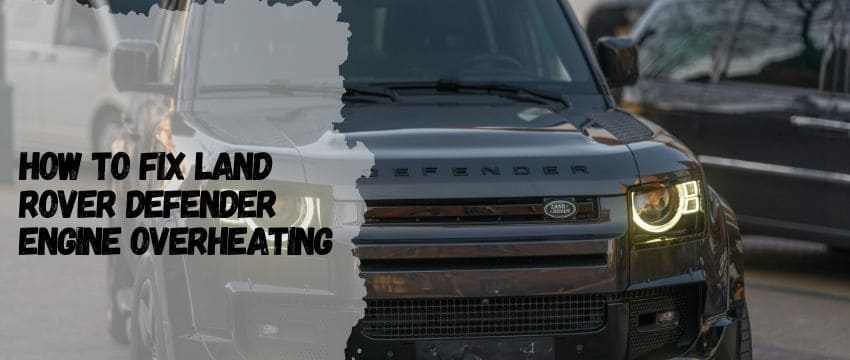What’s up, Defender owner? If your rig’s engine is running hotter than a summer day in the Sahara, you’re not alone. Overheating is a common headache for Land Rover enthusiasts, but don’t sweat it—I’ve got your back. Let’s break down why this happens and how to chill that engine out, old-school style.
Why Your Defender’s Engine Overheats (And How to Stay Cool)
The Usual Suspects Behind Overheating
Your Defender’s engine is like a grumpy camel—it needs the right conditions to stay cool. 50-70% of overheating cases boil down to coolant leaks, a stuck thermostat, or a worn-out water pump. But wait, what if your coolant is full and it’s still overheating? Airflow issues, like a clogged radiator or a busted fan, could be the sneaky culprits. Oh, and let’s not forget off-road adventures—mud-packed radiators love trapping heat.
Ever ignored that tiny puddle under your truck? Coolant leaks often start small but snowball fast. A cracked hose or loose clamp might seem “not a big deal”… until it leaves you stranded. Land Rovers are notorious for complex cooling systems, which means one weak link can throw the whole party off.
Immediate Steps to Take When Your Engine Overheats
Pull Over and Chill (Literally)
So your temperature gauge is screaming? First, don’t panic. Turn off the A/C and crank the heat—it’ll divert warmth away from the engine. Find a safe spot to pull over, pop the hood, and let the engine cool for at least 30 minutes. Trying to open the radiator cap early? Bad idea. Hot coolant can erupt like a geyser, and nobody wants a scalding surprise.

Once things cool down, check the coolant reservoir. If it’s low, top it off with a 50/50 mix of antifreeze and water. No coolant handy? Use distilled water as a temporary fix. But hey, this isn’t a permanent solution—get it to a mechanic ASAP.
Checking the Cooling System Like a Pro
Is Your Coolant Fresh or Foul?
Coolant doesn’t last forever. If yours looks like a murky swamp or smells burnt, it’s time for a flush. Old coolant loses its anti-corrosion mojo, letting gunk build up in the radiator. For Defenders, Land Rover recommends swapping coolant every 3 years or 50,000 miles, whichever comes first. Skipping this? You’re basically inviting overheating to the party.
Test the coolant’s strength with a hydrometer. If the mix is weaker than your morning coffee, it won’t protect against freezing or boiling. Pro tip: Use ethylene glycol-based coolant—it’s the OEM’s go-to for a reason.
Fixing Leaks: From Drips to Disaster
Tracking Down Sneaky Leaks
Finding a coolant leak can feel like a game of hide-and-seek. Start by inspecting hoses, the radiator, and the water pump for crusty residue or wet spots. Pressure testing the system is legit—it reveals leaks you’d never spot otherwise. Oh, and check the heater core! A leak there might fog up your windshield or leave a sweet smell inside the cabin.
Temporary fixes like sealants? They’re a band-aid, not a cure. For example, a cracked expansion tank needs a full replacement. Trust me, patching it up will just leave you stranded again.
Table: Key Cooling System Specs for the Land Rover Defender
| Component | Specification |
|---|---|
| Coolant Type | Ethylene Glycol (OAT) |
| Radiator Capacity | 10-12 liters (system total) |
| Thermostat Opening | Opens at 88-90°C (190-194°F) |
| Water Pump Flow Rate | 100-130 liters/minute |
| Coolant Mix Ratio | 50% antifreeze, 50% distilled water |
Why a Clogged Radiator is Your Worst Enemy
When Your Radiator Says “Nope”
Mud, bugs, or debris blocking the radiator fins? That’s like putting a blanket over your engine. Use a soft brush or compressed air to clean them—no pressure washers, though! Bent fins? Straighten ’em with a fin comb to restore airflow. If the radiator’s clogged internally, flush it with a cleaning solution or replace it if it’s beyond saving.
Upgrading to an all-aluminum radiator? That’s awesome for heavy-duty use. It dissipates heat better and lasts longer than the stock plastic-tanked ones.
Thermostat Troubles: Small Part, Big Drama
Is Your Thermostat Stuck?
A stuck-closed thermostat is like a closed highway—it traps coolant in the engine, causing temps to soar. Test it by boiling it in water: if it doesn’t open near 90°C (194°F), toss it. While you’re at it, replace the gasket and seal. Cheap part, huge peace of mind.
Running without a thermostat? Forget it—your engine will take forever to warm up, hurting fuel efficiency. Stick with OEM-quality replacements to avoid repeat meltdowns.
Water Pump Woes: Silent but Deadly
Signs Your Pump is Biting the Dust
A wobbly pulley or coolant leak near the pump? That’s your water pump waving a white flag. Listen for grinding noises—the bearings might be shot. Replacing it involves removing the serpentine belt and timing cover, so if you’re not mechanically inclined, let a pro handle it.
Use a genuine Land Rover pump or a trusted aftermarket brand. Skimping here could cost you an engine rebuild—no joke.
Off-Road Habits That Overheat Your Engine
When Adventure Meets Overheating
Love crawling through mud? Your radiator does not. Muddy trails clog fins faster than you can say “Defender.” Install a mesh grille guard to block debris. Also, idling for too long in 4×4 mode strains the cooling system—turn off the engine if you’re stuck.
Upgrading to an electric fan? It gives better control than the stock clutch fan, especially in stop-and-go traffic.

Upgrades to Keep Your Defender Ice-Cold
Cooling System Mods Worth the Cash
An auxiliary oil cooler cuts engine load, while a high-flow thermostat boosts coolant circulation. Adding a temperature gauge with an alarm? Totally worth it—you’ll catch issues before they turn catastrophic.
For hardcore off-roaders, a dual-battery setup with a dedicated cooling fan battery ensures the fan never quits. Genius, right?
Preventing Overheating: Long-Term Love for Your Defender
Routine Checks That Save Your Engine
Peek at coolant levels every month and inspect hoses for cracks. Flush the system every 3 years and replace the thermostat every 5 years. Keep the radiator clean, and your Defender will purr like a kitten.
Storing your rig long-term? Use coolant conditioner to prevent corrosion. Simple habits, big rewards.
Why Is My Defender Overheating?
1. Coolant leaks—even small ones drain the system.
2. Faulty thermostat—stuck closed = instant overheating.
3. Clogged radiator—mud or debris blocks airflow.
4. Worn water pump—fails to circulate coolant.
5. Low coolant—from neglect or leaks.
How Can I Fix an Overheating Engine?
1. Stop driving—prevent engine damage.
2. Check coolant levels—top up if low.
3. Inspect for leaks—hoses, radiator, pump.
4. Test/replace thermostat—cheap fix.
5. Clean or replace radiator—restore airflow.
Why Do Land Rovers Overheat?
1. Complex cooling systems—more failure points.
2. Off-road abuse—mud, water, debris.
3. Aging components—hoses, pumps degrade.
4. Poor maintenance—skipped flushes, cheap parts.
5. High engine load—towing, steep climbs.
How to Troubleshoot Overheating Issues
1. Scan for codes—check for sensor issues.
2. Pressure test—find hidden leaks.
3. Check fan operation—electric or clutch.
4. Inspect water pump—look for leaks/wobble.
5. Test thermostat—boil it to see if it opens.
Why Is My Engine Overheating but Coolant Full?
1. Air pockets—trapped in the system.
2. Bad thermostat—not opening fully.
3. Clogged radiator—blocked internally.
4. Failed water pump—impeller broken.
5. Head gasket leak—exhaust gases in coolant.
There you go—a no-BS guide to keeping your Defender’s temper in check. Stay cool out there! 🛠️
Our team is creating outdoor-gear relevant articles with passion. If our articles can help you to find the correct solutions for your questions, we will be happy about that. In the content creation process, we usually collect accurate and useful information online or offline to compile our content in an organized way. Consequently, we can guarantee that you can discover some expected answers to your questions. We appreciate your time on our site.







